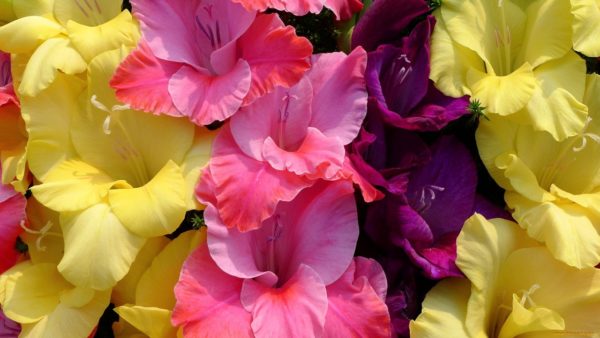
Gladioli are pompous and beautiful flowers on a long peduncle, possessing high decorativeness and the ability to stand for a long time in an already cut form. Historical chronicles say that even in ancient Rome they adorned the flowering gardens of high-ranking aristocrats and enjoyed their special love. Planting and caring for them are not particularly difficult, although they require more labor than growing ordinary low perennials. They feel great in the open ground, but the representatives of the iris family did not get their distribution due to their unpretentiousness and the lack of additional work with them in the garden. The desire for the cultivation of a noble plant appears in gardeners because of their inimitable showiness and entertainment.
Gladioli have several thousand varieties, differing in height, color variety, flower shape, number of petals, stamen shape, which breeders lovingly worked on creating. Their planting and care took up the working time and leisure of all the many fans who wanted to make the variety original or bring its certain qualities to perfection. Today, cultivating gladiolus in the open field has become problem-free due to the appearance of varietal hybrids, during the creation of which valuable properties were strengthened or multiplied.
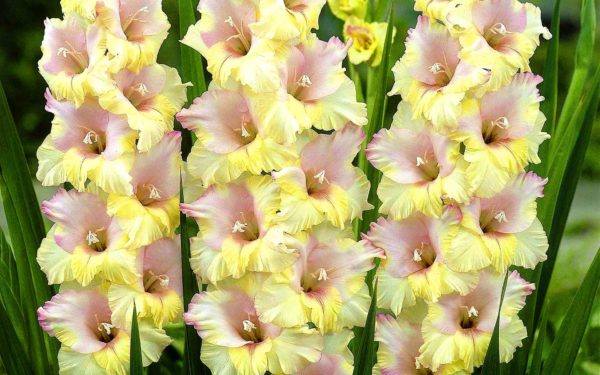
Content
Gladiolus, iris family
The name of the flower comes from the Latin word sword (gladius), and its second name indicates the same associations among residents of a temperate climate. A less common name for the flower is skewer, because it has long leaves, pointed to the end, resembling a sword blade in shape. (photo 1). In the wild, the flower is able to grow in Siberia and Madagascar, on the Mediterranean coast and on the southern tip of the African mainland.

The variety of species bred by breeders led to the fact that the gladiolus flower, planting and care for it, and possible breeding methods began to give plants from 50 to 220 cm in height. The color scheme of gladiolus exceeds the capabilities of the human imagination, because it even contains black and green specimens. The corm plant still has a characteristic leaf shape, but the funnel-shaped flowers can be from a width of 2 cm in the wild to 25 in lovingly grown.
Collected on the stem in the form of an ear, they grow in different numbers, up to 20 or more, but only a few of them bloom at a time. One gladiolus, the flowering time of which is determined by the number of flowers on the stem, can stand in the vase for a long time, dissolving new funnels at the top of the stem, instead of dying in its lower part.
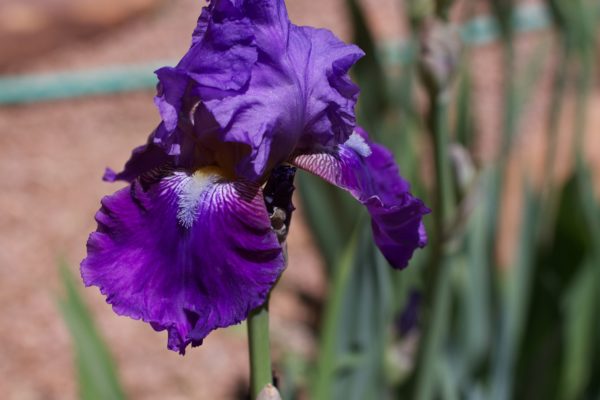
The most spectacular and spectacular varieties are available to any gardener in growing:
- Yuri Mametsky, raspberry with red on the edges of the funnel;
- Elegy, with a maroon almost black flower;
- White Snowstorm and First Ball are blindingly white;
- Golden Pantry of the Sun;
- Orange Summer radical orange hue, etc.
Interesting: Variety Van Tingoven, painted in orange-red halftones, simultaneously opens 6 flowers, of which 18 are located on the stem.
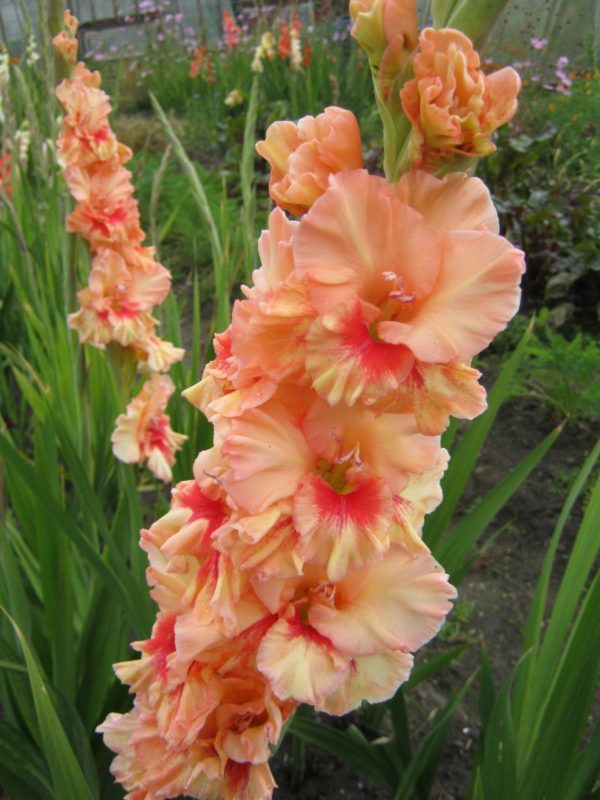
Advantages and disadvantages of gladiolus
The problem of how to plant gladioli, what method to choose for this, what varieties to give preference to and where to buy high-quality planting material, faces everyone who first decided to master gladioli. Growing and caring for this flower may indeed seem difficult for the amateur, but everything comes with time and experience.
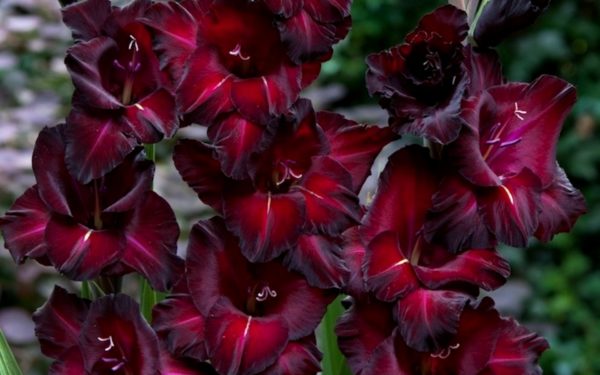
But this process has undeniable bonuses that more than redeem the initial difficulties:
- there are about 170 species and thousands of varieties of beautiful plants;
- it can be grown with decorative purposes, as an element of a garden, park composition, part of a flower garden or any flower bed;
- gladiolus is grown with commercial spruces, forcing in a greenhouse, or planting spectacular varieties for cutting into bouquets:
- its funnel-shaped flowers can be small, medium, large and gigantic and satisfy any decorative need, from a small vase to a grand garland;
- selection made the edges of the flowers smooth, folded, fringed and corrugated;
- on a spike-like stem, flowers can be arranged in one, two, three rows and even zigzag;
- the color gamut not only includes all conceivable shades of the spectrum visible to the human eye, but can also smoothly transition from one color to another, combine several shades, and be decorated with additional elements;
- the plant is perennial and for 3-4 years will delight the eye with its flowering;
- gladioli are from very early to very late and with skillful selection they can fill the entire plot, making it blooming from late May to mid-autumn;
- stems of different lengths will help to use gladiolus for any purpose.
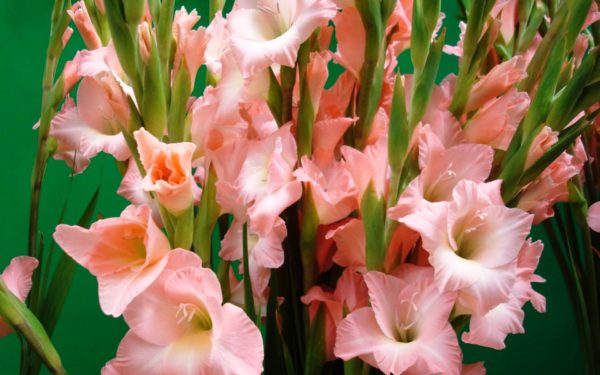
Of the so-called shortcomings of a beautiful plant, only specific features of planting and care, and the ability of flowers to fade and lose color, after a certain period, can be noted. However, for several years it is enough, unlike annuals, which need to be updated annually.
Planting material, place and soil
The visual characteristics of future plants depend on two key points: high-quality planting material and correctly selected and prepared soil. The peculiarity of this representative of the iris in the cultivated version is the exactingness of the prepared place and the quality of its preparation. Growing gladioli in the open field implies the impossibility of a simple planting of a bulb or plant in a dug up bed. They dig the earth twice, in autumn and spring, put sand in the loam, compost is required in the sandy soil, if the soil is acidic - dolomite flour, in order to reduce the level of acidity.
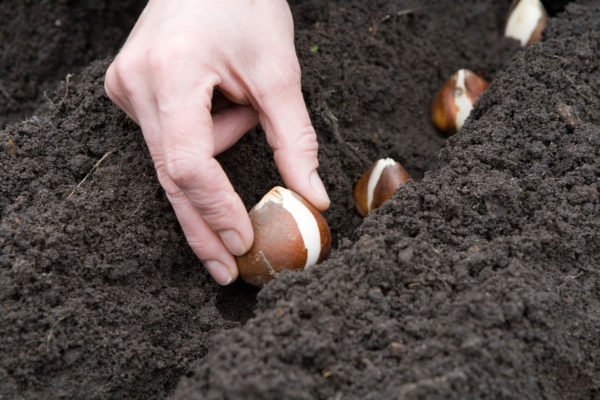
The soil should be light loamy or sandy, neutral acidity, and the list of conditions on how to properly plant gladioli in the spring, so that they turn out beautiful and successful, begins with the requirements for preparing the place.
Superphosphate fertilizers and potassium salt are added to the humus introduced into the soil in the fall. Those who have been cultivating iris for a long time have their own planting material - bulbs dug in the fall. Planting material must be carefully selected, and this is the main secret, how to grow a gladiolus presentation. The acquired bulbs are examined for damage or diseased places, try to choose not very large, but not very small. Before planting, they are cleaned of scales, if a small damaged area is found, cut with a calcined knife and greased with brilliant green.

Planting, watering and top dressing
Germinated in a warm place on a damp cloth or napkin (to the root primordium and sprout on top) can be planted in the prepared soil. Planting gladioli in spring in open ground is done after the bulbs are treated with an antiseptic solution. Otherwise, the likelihood of developing diseases is very high. For large bulbs, a planting depth of at least 15 cm is made, for medium bulbs, 9-10 is permissible, children can be planted at a depth of 5-6 cm.
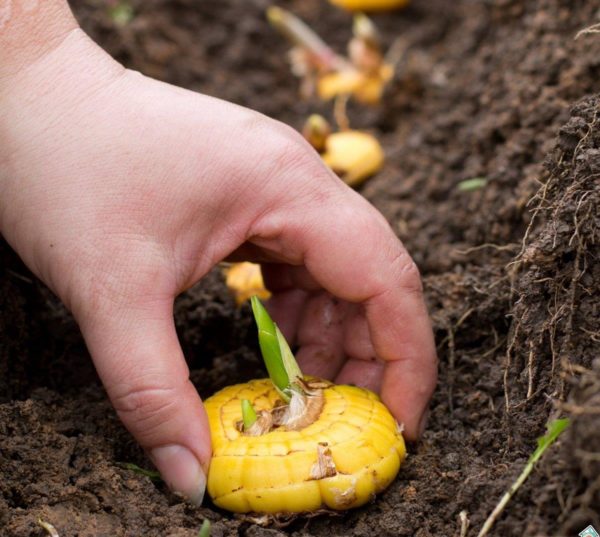
Beds with gladioli need constant weeding from weeds and mulching the soil, designed to maintain the necessary moisture. Watering should be regular, without getting moisture on the leaves of the plant, it is best to pour the necessary water into the furrows done in the row-spacings.
Gladiolus requires 4 times top dressing:
- quarter of Art. diluted ammonium nitrate for each plant when it reaches 20 cm;
- potash fertilizer as soon as the 4th leaf appears;
- with ovary buds - a special purchased product according to the instructions;
- superphosphate fertilizers as soon as the flowering period has ended.
The answer to the question of how to plant gladioli so that they do not fall does not imply positive options. The flower will have to be tied to a peg in any version, whether it is half a meter, or 220 cm in height.
Flowers are cut late in the evening, when there is no more sunlight, and if they are transported, then the best option is at the stage of two buds, and they will open already during transportation.
The plant is susceptible to viruses, fungi and bacteria, so it is better to prepare for future difficulties and stock up on the necessary means of control.

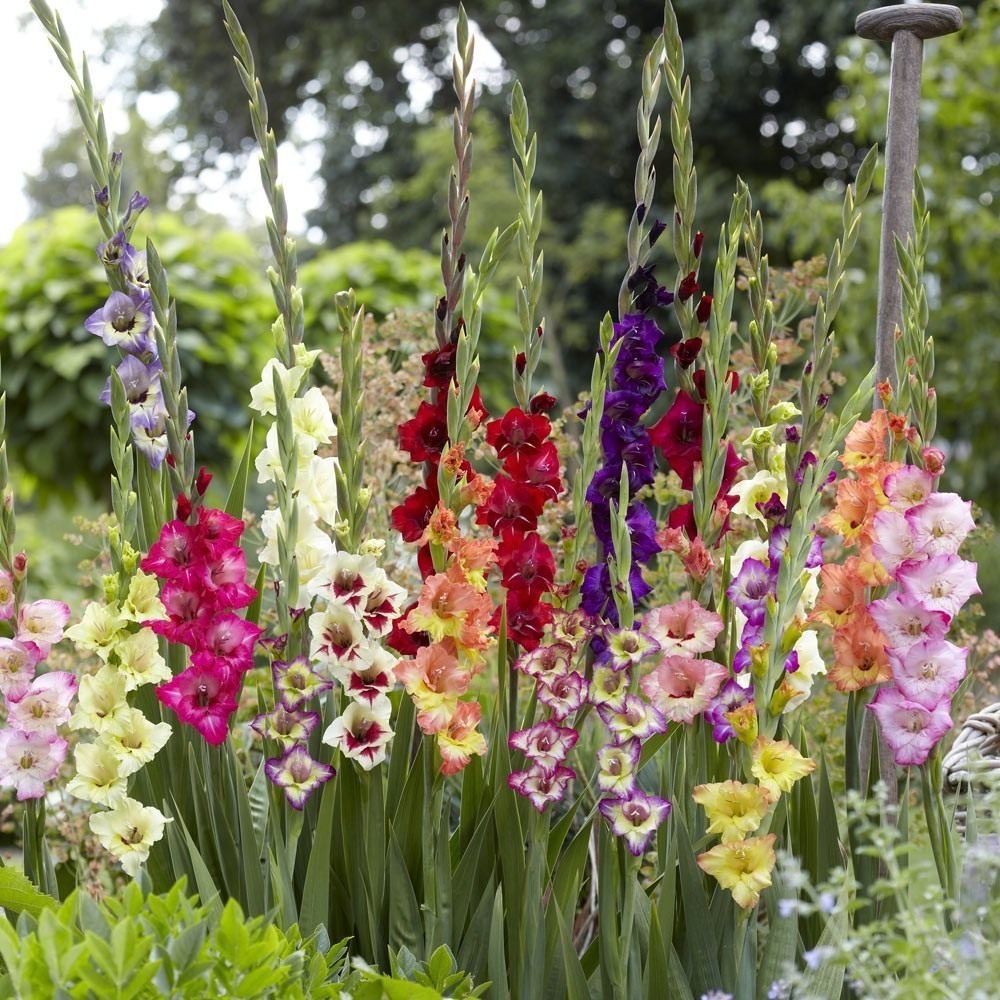
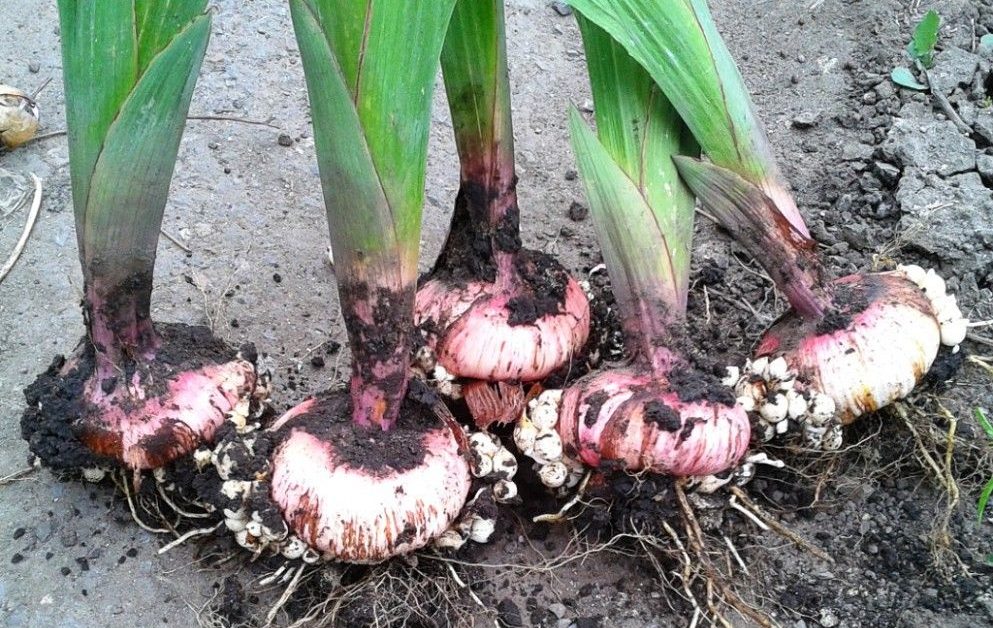
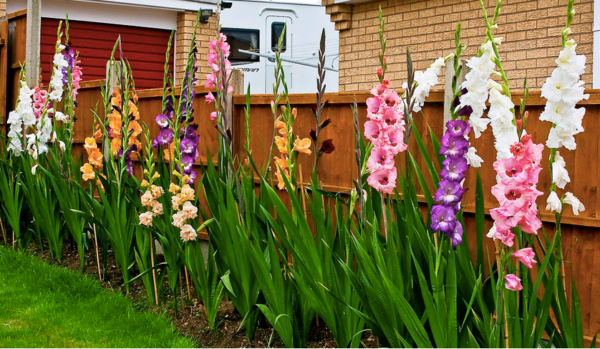
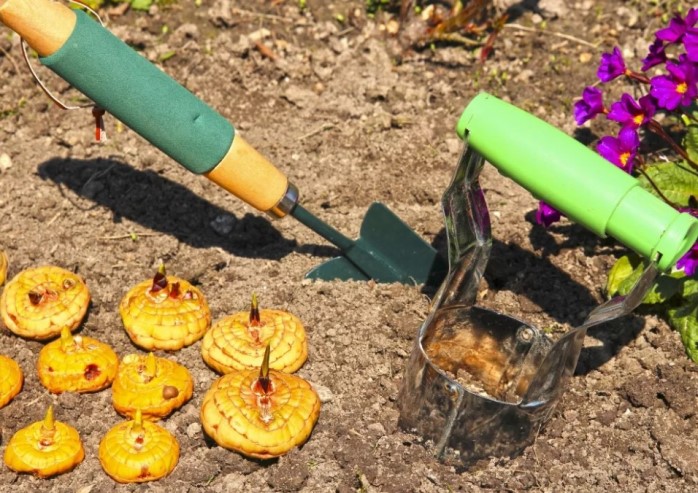 When and how to plant gladioli in spring in open ground
When and how to plant gladioli in spring in open ground How to deal with thrips on gladioli
How to deal with thrips on gladioli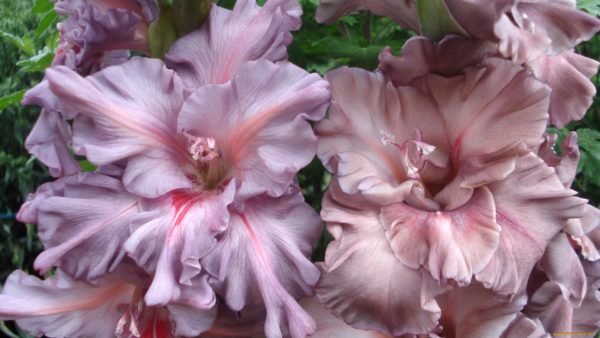 Children of gladioli: what to do with them
Children of gladioli: what to do with them